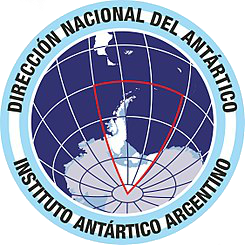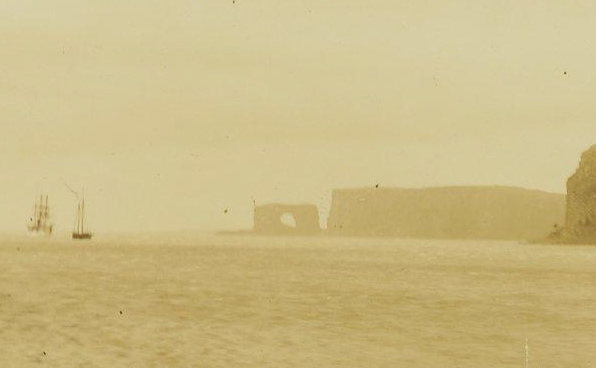|
Demographics Of Antarctica
Antarctica contains research stations and field camps that are staffed seasonally or year-round, and former whaling settlements. Approximately 12 nations, all signatory to the Antarctic Treaty, send personnel to perform seasonal (summer) or year-round research on the continent and in its surrounding oceans. There are also two official civilian settlements: Villa Las Estrellas in Base Presidente Eduardo Frei Montalva operated by Chile, and Fortín Sargento Cabral in Esperanza Base operated by Argentina. The population of people doing and supporting scientific research on the continent and its nearby islands south of 60 degrees south latitude (the region covered by the Antarctic Treaty) varies from approximately 4,000 in summer to 1,000 in winter. In addition, approximately 1,000 personnel including ship's crew and scientists doing onboard research are present in the waters of the treaty region. The largest station, McMurdo Station, has a summer population of about 1,000 peopl ... [...More Info...] [...Related Items...] OR: [Wikipedia] [Google] [Baidu] |
Antarctic
The Antarctic (, ; commonly ) is the polar regions of Earth, polar region of Earth that surrounds the South Pole, lying within the Antarctic Circle. It is antipodes, diametrically opposite of the Arctic region around the North Pole. The Antarctic comprises the continent of Antarctica, the Kerguelen Plateau, and other list of Antarctic and Subantarctic islands, island territories located on the Antarctic Plate or south of the Antarctic Convergence. The Antarctic region includes the ice shelf, ice shelves, waters, and all the island territories in the Southern Ocean situated south of the Antarctic Convergence, a zone approximately wide and varying in latitude seasonally. The region covers some 20 percent of the Southern Hemisphere, of which 5.5 percent (14 million km2) is the surface area of the Antarctica continent itself. All of the land and ice shelf, ice shelves south of 60th parallel south, 60°S latitude are administered under the Antarctic Treaty System. Biogeograph ... [...More Info...] [...Related Items...] OR: [Wikipedia] [Google] [Baidu] |
List Of Antarctic Field Camps
Many research stations in Antarctica support satellite field camps which are, in general, seasonal camps. The type of field camp can vary – some are permanent structures used during the annual Antarctic summer, whereas others are little more than tents used to support short term activities. Field camps are used for many things, from logistics (Sky Blu (Antarctica), Sky Blu) to dedicated scientific research (WAIS Divide Field Camp). List of field camps See also *Research stations in Antarctica *Demographics of Antarctica *List of Antarctic expeditions *Transport in Antarctica References * * {{cite web , url=https://www.comnap.aq/publications/maps/comnap_map_edition5_a0_2009-07-24.pdf , title=COMNAP Antarctic Facilities Map , archive-url=https://web.archive.org/web/20090915110710/https://www.comnap.aq/publications/maps/comnap_map_edition5_a0_2009-07-24.pdf , archive-date=September 15, 2009 Outposts of Antarctica, Antarctica-related lists, Field camps ... [...More Info...] [...Related Items...] OR: [Wikipedia] [Google] [Baidu] |
Research Stations In Antarctica
Multiple governments have set up permanent research stations in Antarctica and these bases are widely distributed. Unlike the drifting ice stations set up in the Arctic, the current research stations of the Antarctic are constructed either on rocks or on ice that are (for practical purposes) fixed in place. Many of these stations are demographics of Antarctica, staffed throughout the year. Of the 56 signatories to the Antarctic Treaty System, Antarctic Treaty, a total of 55 countries (as of 2023) operate seasonal (summer) and year-round research stations on the continent. The number of people performing and supporting scientific research on the continent and nearby islands varies from approximately 4,800 during the summer to around 1,200 during the winter (June). In addition to these permanent stations, approximately Antarctic field camps, 30 field camps are established each summer to support specific projects. History First bases During the Heroic Age of Antarctic Explo ... [...More Info...] [...Related Items...] OR: [Wikipedia] [Google] [Baidu] |
Argentine Antarctica
Argentine Antarctica ( or ) is an area on Antarctica claimed by Argentina as part of its national territory. It consists of the Antarctic Peninsula and a triangular section extending to the South Pole, delimited by the 25th meridian west, 25° West and 74th meridian west, 74° West meridians and the 60th parallel south, 60° South parallel. This region overlaps with British Antarctic Territory, British and Chilean Antarctic Territory, Chilean claims in Antarctica. None of these claims have widespread international recognition. Argentina's Antarctic claim is based on its presence on a base on Laurie Island in the South Orkney Islands since 1904, along with the area's proximity to the South American continent, and is subject to the Antarctic Treaty. However the presence on the Antarctic mainland was established in 1951, and the official claim on the mainland was started to be formulated on 1941, with several changes and was officially declared on 1957. Administratively, Argen ... [...More Info...] [...Related Items...] OR: [Wikipedia] [Google] [Baidu] |
Brazilian Antarctica
Brazilian Antarctica ( or ''Antártica Brasileira'') is the Antarctic territory south of 60°S, and from 28°W to 53°W, proposed as a "zone of interest" by geopolitical scholar Therezinha de Castro. While the substance of that designation has never been precisely defined, it does not formally contradict the Argentine and British claims geographically overlapping with that zone (the zone shares a border but does not overlap with the Chilean Antarctic Territory to its west). The country formally expressed its reservations with respect to its territorial rights in Antarctica when it acceded to the Antarctic Treaty on 16 May 1975, making the first official mention of the Frontage Theory, which states (simplified) that sovereignty over each point in Antarctica properly (bar the South Pole itself) belongs to the first country whose non-Antarctic territory one would reach when travelling north in a straight line from such a point. [...More Info...] [...Related Items...] OR: [Wikipedia] [Google] [Baidu] |
CSIRO Publishing
CSIRO Publishing is an Australian-based science and technology publisher. It publishes books, journals and magazines across a range of scientific disciplines, including agriculture, chemistry, plant and animal sciences, natural history and environmental management. It also produces interactive learning modules for primary school students and provides writing workshops for researchers. CSIRO Publishing operates within the Commonwealth Scientific and Industrial Research Organisation (CSIRO). It was established as a stand-alone business unit in 1995. Books CSIRO Publishing publishes books in a number of categories, including: * Animals: behaviour; birds; domesticated; ecology and management; field guides; fish; genetics and evolution; health and welfare; invasive; invertebrates; mammals and marsupials; reproduction and physiology; reptiles and amphibians; and wildlife. * Built Environment: architecture; building; codes and standards; engineering; landscape architecture; and plan ... [...More Info...] [...Related Items...] OR: [Wikipedia] [Google] [Baidu] |
Subantarctic Islands
The sub-Antarctic zone is a physiographic region in the Southern Hemisphere, located immediately north of the Antarctic region. This translates roughly to a latitude of between 46° and 60° south of the Equator. The subantarctic region includes many islands in the southern parts of the Atlantic, Indian, and Pacific oceans, especially those situated north of the Antarctic Convergence. Subantarctic glaciers are, by definition, located on islands within the subantarctic region. All glaciers located on the continent of Antarctica are by definition considered to be Antarctic glaciers. Geography The subantarctic region comprises two geographic zones and three distinct fronts. The northernmost boundary of the subantarctic region is the rather ill-defined Subtropical Front (STF), also referred to as the Subtropical Convergence. To the south of the STF is a geographic zone, the Subantarctic Zone (SAZ). South of the SAZ is the Subantarctic Front (SAF). South of the SAF is anoth ... [...More Info...] [...Related Items...] OR: [Wikipedia] [Google] [Baidu] |
English Language
English is a West Germanic language that developed in early medieval England and has since become a English as a lingua franca, global lingua franca. The namesake of the language is the Angles (tribe), Angles, one of the Germanic peoples that Anglo-Saxon settlement of Britain, migrated to Britain after its End of Roman rule in Britain, Roman occupiers left. English is the list of languages by total number of speakers, most spoken language in the world, primarily due to the global influences of the former British Empire (succeeded by the Commonwealth of Nations) and the United States. English is the list of languages by number of native speakers, third-most spoken native language, after Mandarin Chinese and Spanish language, Spanish; it is also the most widely learned second language in the world, with more second-language speakers than native speakers. English is either the official language or one of the official languages in list of countries and territories where English ... [...More Info...] [...Related Items...] OR: [Wikipedia] [Google] [Baidu] |
Antarctic English
Antarctic English is a variety of the English language spoken by people living on the continent of Antarctica and within the subantarctic islands. Spoken primarily by scientists and workers in the Antarctic tourism industry, it consists of various unique words and is spoken with a unique accent. During the 19th and 20th centuries, Antarctic English was influenced by Spanish-speaking South Americans and Northern European explorers who introduced new words that continue to be used today. Accent An Antarctic accent was first reported in 2019 in the ''Journal of the Acoustical Society of America'', in a study in which researchers observed changes in the vocal phonetics of scientists over the course of a winter period in Antarctica. They observed a change in vowel pronunciation in the scientists, and vowels such as that in "food" and the second in "window" began being pronounced in a more fronted position of the mouth than in other English varieties. The changes are very slight, th ... [...More Info...] [...Related Items...] OR: [Wikipedia] [Google] [Baidu] |
Juan Pablo Camacho
Juan Pablo Camacho Martino (born 21 November 1984) is the first Chile, Chilean born in the Antarctic Region and the ninth person born south of the 60th parallel south, 60 parallel. He was born in Villa Las Estrellas at the Base Presidente Eduardo Frei Montalva, Presidente Eduardo Frei Montalva Base in King George Island (Antarctica), King George Island. He was the first person conceived on the continent. His parents were sent there to conceive and give birth to a child in order to strengthen Chile's claim on Antarctica. Biography Juan Pablo Camacho is the third son of Germán Camacho and Ana María Martíno, both Chilean citizens, his father was a surgeon and officer in the Chilean Air Force and his mother also worked at the Antarctic base. He was born at 6:30 a.m. on November 21, 1984 in Villa Las Estrellas, a village located on President Eduardo Frei Montalva Base, King George Island. A medical team brought from Continental Chile was in charge of the intervention that produced t ... [...More Info...] [...Related Items...] OR: [Wikipedia] [Google] [Baidu] |
Kerguelen Islands
The Kerguelen Islands ( or ; in French commonly ' but officially ', ), also known as the Desolation Islands (' in French), are a group of islands in the subantarctic, sub-Antarctic region. They are among the Extremes on Earth#Remoteness, most isolated places on Earth, with the closest territory being the Heard Island and McDonald Islands territory of Australia located at roughly , and the nearest inhabited territory being Madagascar at more than in distance. The islands, along with Adélie Land, the Crozet Islands, Île Amsterdam, Amsterdam and Île Saint-Paul, Saint Paul islands, and France's Scattered Islands in the Indian Ocean, are part of the French Southern and Antarctic Lands and are administered as a separate district. The islands constitute one of the two exposed parts of the Kerguelen Plateau (the other being Heard Island and the McDonald islands), a large igneous province mostly submerged in the southern Indian Ocean. The main island, Grande Terre, is in area, about ... [...More Info...] [...Related Items...] OR: [Wikipedia] [Google] [Baidu] |





